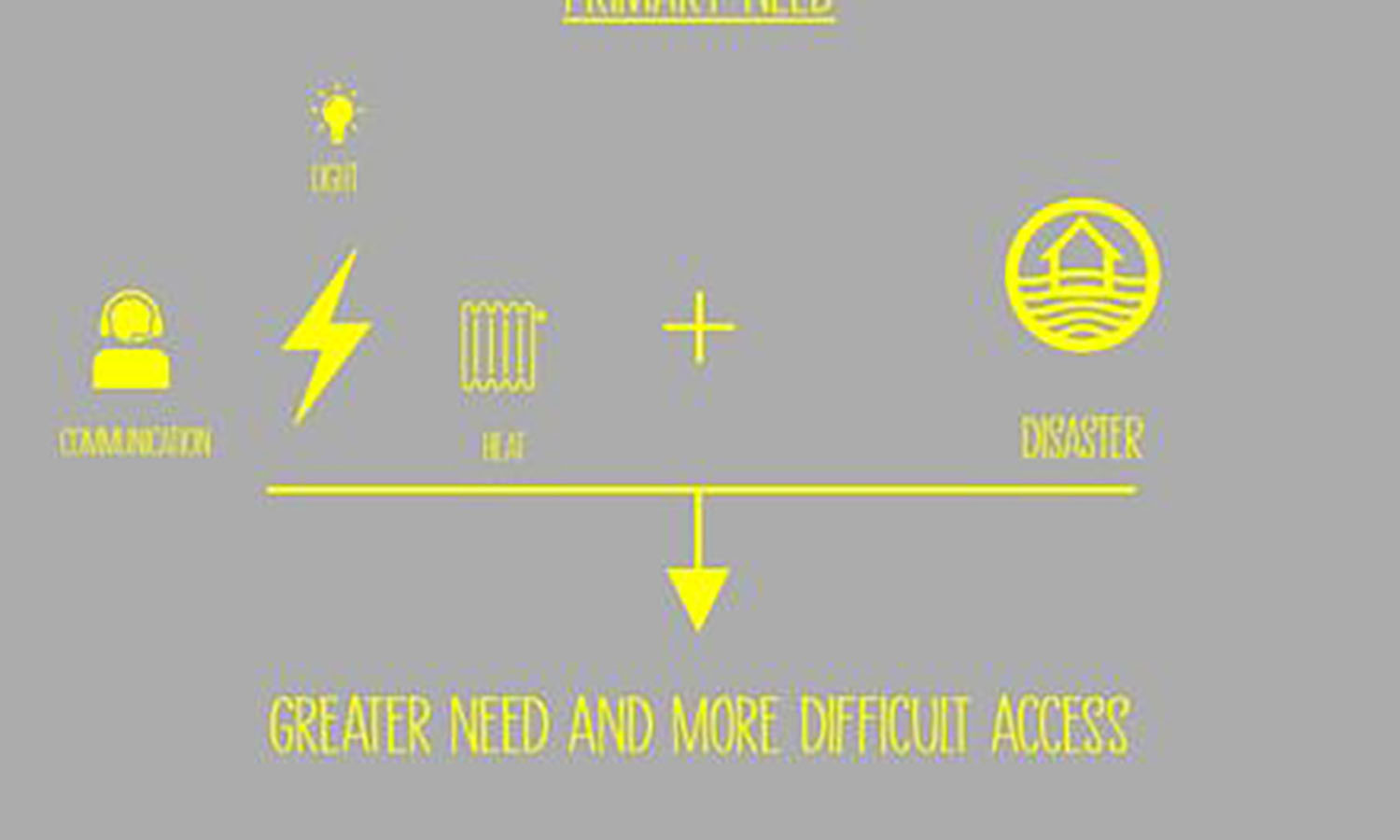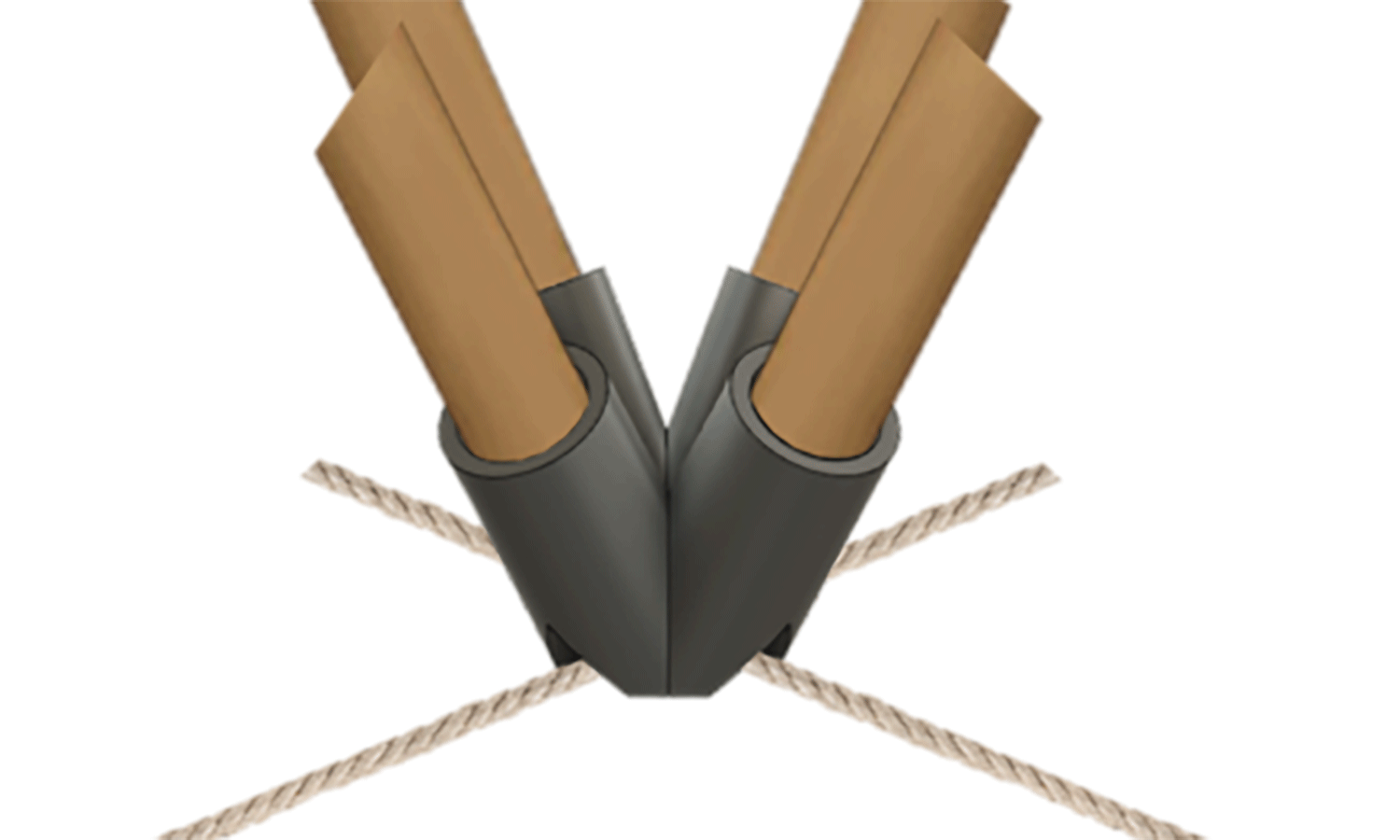Project repository : local-communication
 LOCAL.COMMUNICATION
LOCAL.COMMUNICATION
Nom du projet: Local communication
Team: Thomas Anghelovici (architecture), Anouk Daguin(Art et espace public), jean Twyffels (architure)
Description: Local discussion group
Projet en résumé: Our project answers to a questioning based on communication during a natural disaster.
We encountered different problems during our analysis of data and testimonials but we tried to find out how the different actors could communicate with each other in the simplest way possible. Following the process of our research, we went for the idea of a local discussion group which is not using internet. It was for us the easiest way to connect people locally (example: a user sends a sms/ message “I need a doctor”. He receives a message back with the coordinates of doctors near him.
Our idea is therefore to develop a communication network in the same way Facebook did but without any internet and only working through a mobile network. The concept is simple: a question/need, an answer.
The role of FabLab would be to be a cell tower and to sectorise the different areas of exchanges of the localized discussion. The use of mobile phones will allow a better adaptation to crisis situations in countries with low incomes and the collected data will then been available via a smartphone or mobile phone.
storyboard:
0.Mise en relation: creation de conversations
1.Catastrophe: innondation
2.Personne sinistrées
3.Numéro d’urgence
4.Centrale de récéption de sms
tutorial de fabrication:
source et référance:
 LOCAL.COMMUNICATION (processus)
LOCAL.COMMUNICATION (processus)
Our questioning was based on fields’ analysis, on scientific data and on testimonials. The aim of this was to find a solution which would allow to establish a simple and effective communication between the different actors of the field in case of a disaster.
We ended up creating different scenarios.
They are for us a sketch of possible answers to a problem: the rescue of citizens.
Our work process can be summarized by constant back and forth between our work and the reality of the fields/the references. We decided to divide it in 4 stages; an analysis, two of storyboarding and one of embodiment.
STAGE 1:ANALYSIS
(jour 0 à jour 15)
- Acquaintance of the situation through research ( newspapers, scientific articles, testimonials, social media, etc. )- Skype with the Kerala. Confrontation with reality- not wanting to choose the subject of our work —> real needs, choose one and work on it.- problem of restraint = communication- what is communication? Comprehension of different levels of communication.
- Acquaintance of the situation through research ( newspapers, scientific articles, testimonials, social media, etc. )- Skype with the Kerala. Confrontation with reality- not wanting to choose the subject of our work —> real needs, choose one and work on it.- problem of restraint = communication- what is communication? Comprehension of different levels of communication.
STAGE 2: SONAR (physical)
(jour 15 à 39)
- first idea of response = prevention- the sonar ? low-tech object allowing to send en signal downstream when the level goes upstream- Haugimont; production of a simplified object, search of simplicity : open circuit joined to a L.E.D, immerses circuit = closed circuit = L.E.D alight. (projet 001)– analysis of the references used in similar cases (Tepmachacha= low-cost kit of sonar used in Cambodia)- presentation of the progression.Naivety on the question + Question on the feasibility ?? BIG QUESTIONING- returning on the analysis stage
STAGE 3: MAPS (Theoretical)
(jour 39 à 80)
- second idea of response : evolution- the map? The idea of referencing the information concerning the fields- the active map? A tool which would allow to know the evolution of a territory during a disaster (projet 002) (b)– the users/actors do the map- analysis of the references used in similar cases (micro ID, google, etc)- confrontation with the real = only 20% of the population owns smartphones. 80% have features phones.- INTERNET bridge – SMS (projet 003)– analysis of references (Ushahidi, google, etc)- Skype with the Kerala, they finds it interesting but questions the locality and the scenarisation – presentation of progression. The scripture of the map ok. Lecture ?? How to give the information? Scenario? Effectiveness ? Why would people use it ?
- savoir ou sont les gens en difficultés, plus rapide quand il y a plusieur point.. Mais c’est pas si facilement calculable, doubler le nombre de point ne veut pas dire doubler la vitesse (projet 004) (photo 1,2)
##STAGE 4: FREE LOCAL SHOP (theoretical)
(jour 80 à 103)
- third idea of response = connection- the conversation ? Took that allows to put in contact the people who have similar needs/similar resources. (projet 005)– analysis of the references used in similar cases (Twitter, etc).
- Les gens vont se faire harceler ?? idée de quantifier les messages et les supprimer quand ils sont vidé, besoin d’ingénieur orange..sauf si (projet 006)– presentation of the progression. PRE JURY. Problem transferring the idea and of clarity within the presentation. Questioning the effectiveness of the given solution ?










